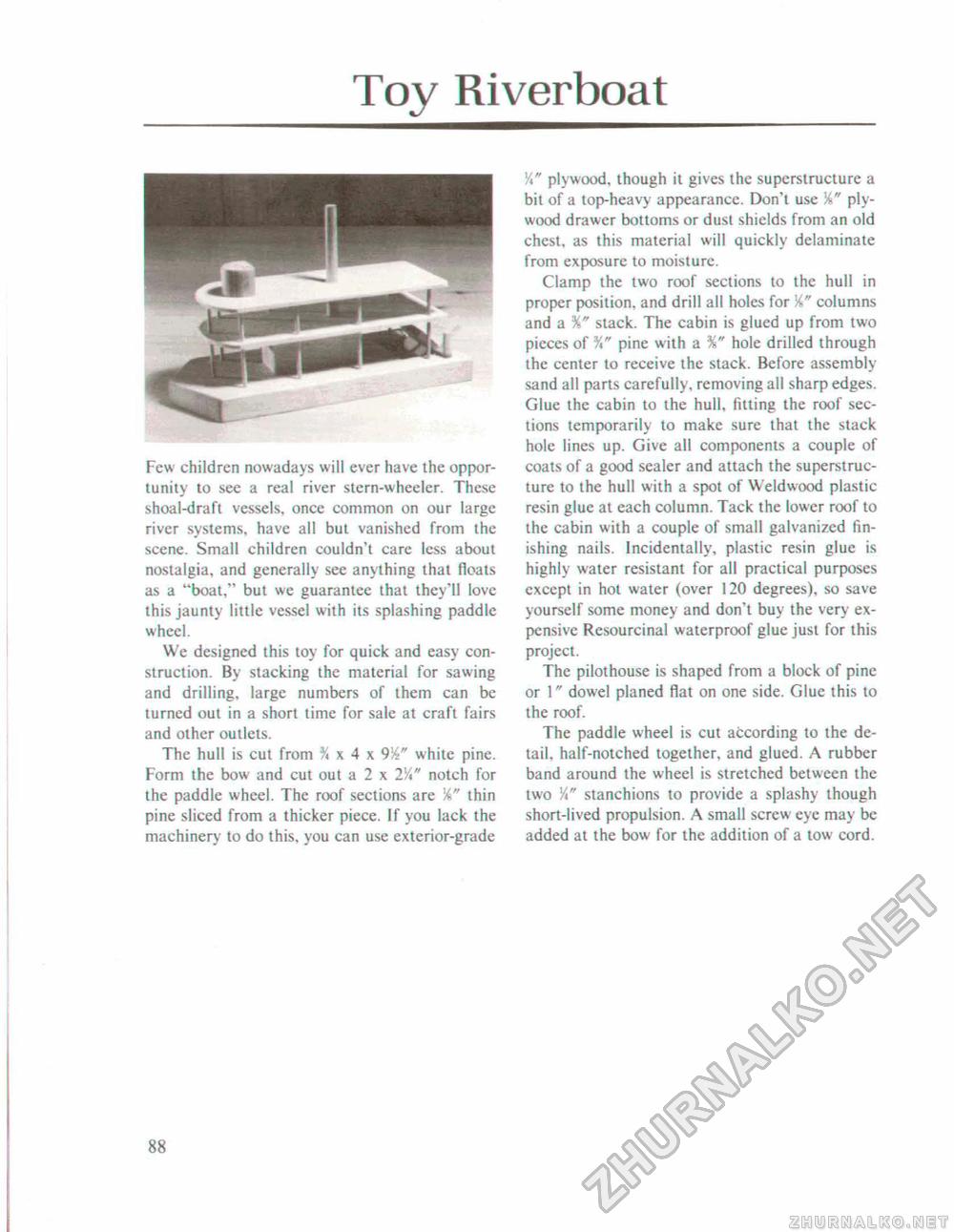Woodworker's Journal 101-Projects-for-Woodworkers, страница 95
Toy RiverboatFew children nowadays will ever have the opportunity to see a real river stern-wheeler. These shoal-draft vessels, once common on our large river systems, have all but vanished from the scene. Small children couldn't care less about nostalgia, and generally see anything that floats as a "boat," but we guarantee that they'll love this jaunty little vessel with its splashing paddle wheel. We designed this toy for quick and easy construction. By slacking the material for sawing and drilling, large numbers of them can be turned out in a short time for sale at craft fairs and other outlets. The hull is cut from % x 4 x 9white pine. Form the bow and cut out a 2 x 2%" notch for the paddle wheel. The roof sections are thin pine sliced from a thicker piece. If you lack the machinery to do this, you can use exterior-grade Ya" plywood, though it gives the superstructure a bit of a top-heavy appearance. Don't use plywood drawer bottoms or dust shields from an old chest, as this material will quickly delaminate from exposure to moisture. Clamp the two roof sections to the hull in proper position, and drill all holes for columns and a %" stack. The cabin is glued up from two pieces of X" pine with a %" hole drilled through the center to receive the stack. Before assembly sand all parts carefully, removing all sharp edges. Glue the cabin to the hull, fitting the roof sections temporarily to make sure that the stack hole lines up. Give all components a couple of coats of a good sealer and attach the superstructure to the hull with a spot of Weldwood plastic resin glue at each column. Tack the lower roof to the cabin with a couple of small galvanized finishing nails. Incidentally, plastic resin glue is highly water resistant for al! practical purposes except in hot water (over 120 degrees), so save yourself some money and don't buy the very expensive Resourcinal waterproof glue just for this project. The pilothouse is shaped from a block of pine or 1" dowel planed flat on one side. Glue this to the roof. The paddle wheel is cut according to the detail, half-notched together, and glued. A rubber band around the wheel is stretched between the two Vk" stanchions to provide a splashy though short-lived propulsion. A small screw eye may be added at the bow for the addition of a tow cord. 88 |








